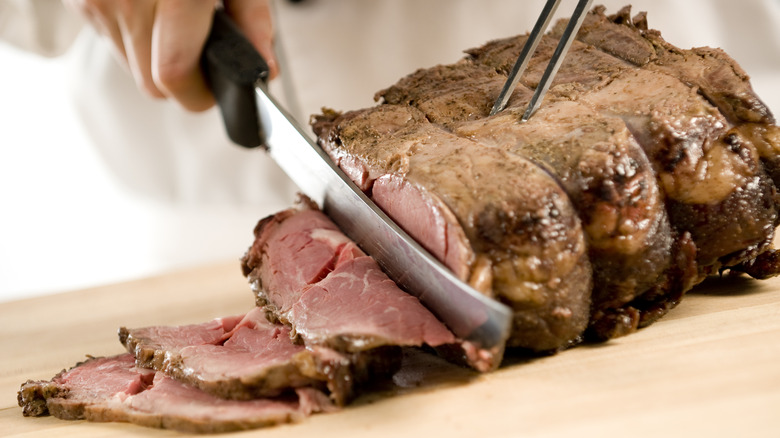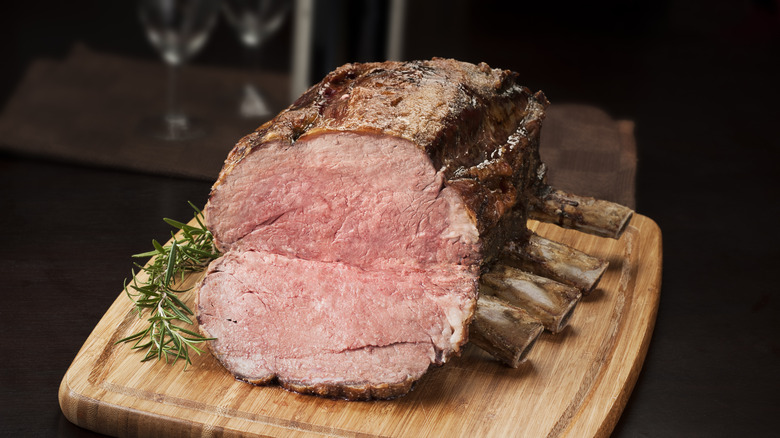Prep Roast Beef In Advance With Juicy Results Using The Reverse Sear Method
Sizzling hot steaks make for a delicious dinner, but they can be difficult to prepare for a large crowd. Especially when cooking on a limited surface — such as a pan — there are only so many pieces of meat that can be prepared simultaneously. Turn to a roast if you're entertaining a group of diners, as it's easier to purchase for a large gathering. With some careful know-how, this dish still creates meat with a juicy, medium-rare interior. If you're splurging on a cut like prime rib, the results may dazzle even more than a steak.
However, cooking such a large cut of beef is understandably intimidating. The fear of an overcooked interior looms and only becomes more stressful when timing it with other dishes in the kitchen. Alleviate this fear by turning to reverse searing. This method not only keeps the oven low for the majority of cooking but also enables you to prep the beef in advance. Let's dive into the details.
Reverse sear uses careful temperature control to ensure a tasty interior
Reverse searing relies on a slow cooking method. First, the roast is heated in the oven at a temperature of 250 F or lower, for a duration of up to four hours. The exact cooking time is variable since it depends on the size and thickness of the meat. To ensure an ideal interior, a well-functioning meat thermometer is key. Once it hits around 115 F, the roast is ready for the next step.
The advantage of this technique is that preparation can be paused here. If dinner is coming up soon, simply turn off the oven and leave the roast for around an hour. Alternatively, the beef can even be stored overnight in the fridge if you let it rest at room temperature first. When you're hosting guests for a dinner party or holiday meal, every step you can do ahead of time is helpful.
Once you're ready to eat, it's time to create the delicious exterior crust. Turn the oven up to 500 F, and let the beef roast turn a mouthwatering dark color on the outside. Once the meat reaches an internal temperature of around 120 F, remove it for a medium-rare doneness. Don't forget to rest the beef first to ensure every bite is a juicy delight (the internal temperature will also slightly increase during this time).

